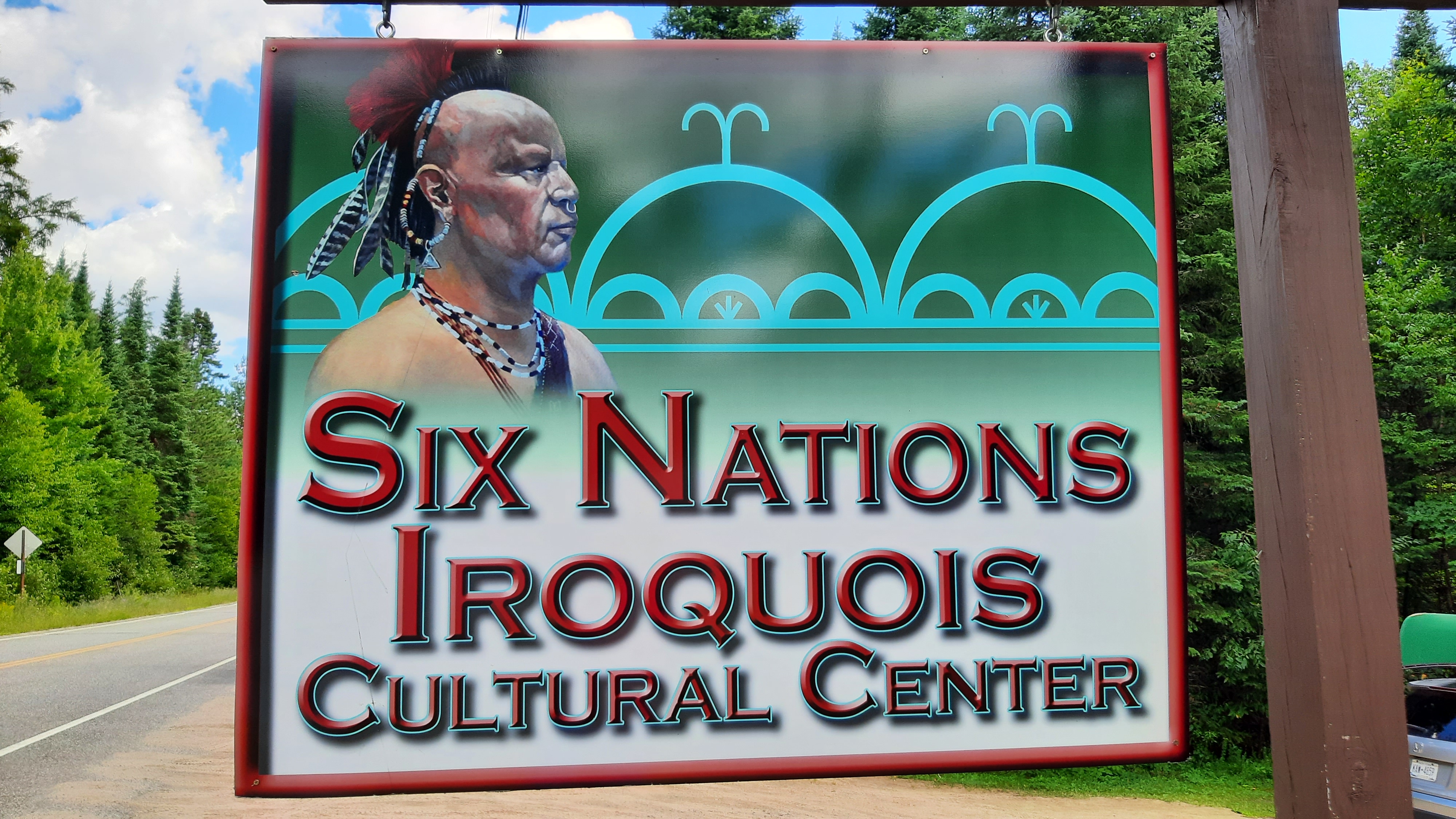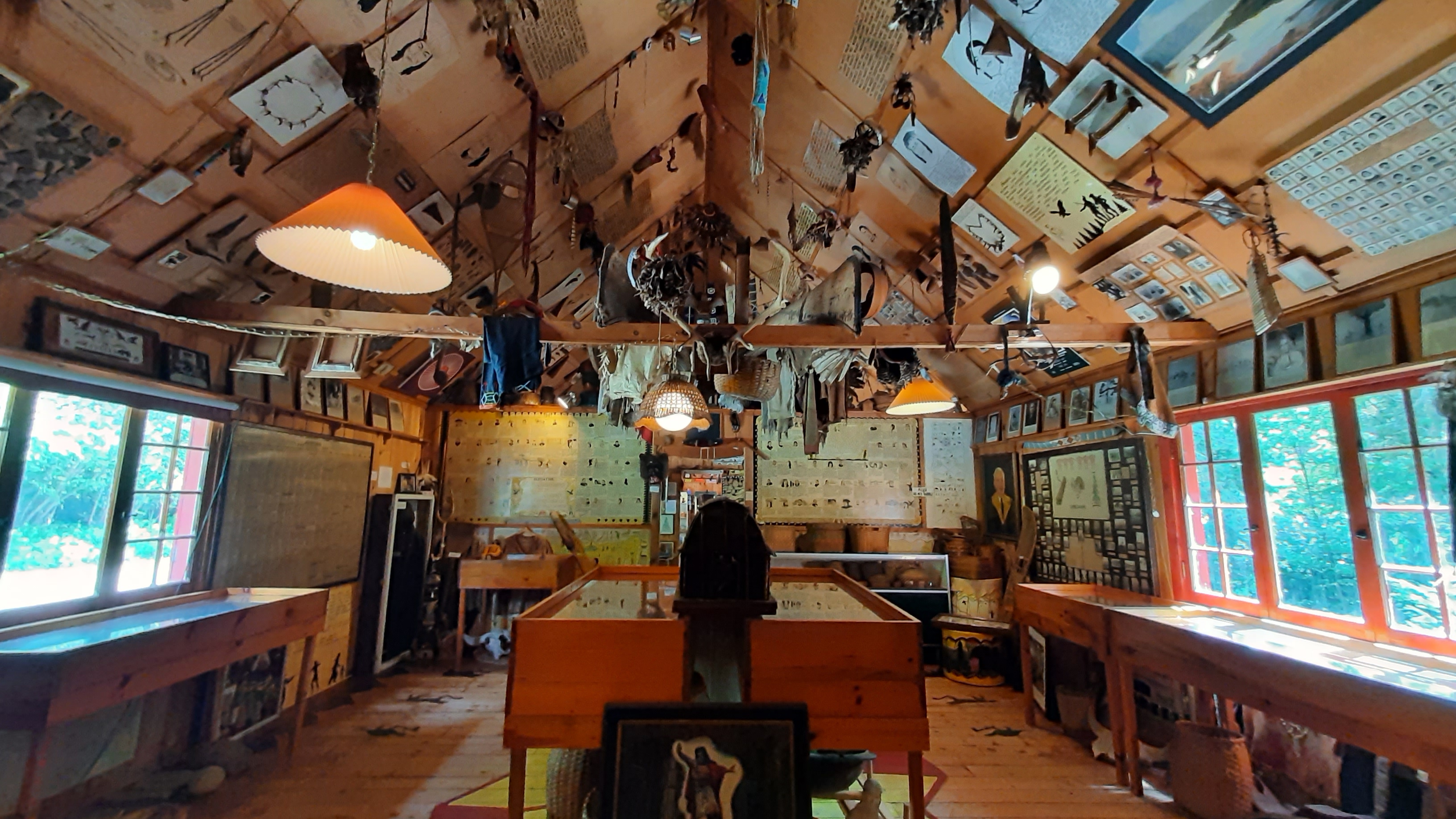
Growing A Family Tradition
By Nick King - Forever Adirondacks Intern
Tuesday, August 9, 2022
In July, I was lucky enough to get out of the office and travel up to Onchiota, NY, and visit the Six Nations Iroquois Cultural Center with my colleague Justin. Despite growing up right outside the Adirondack Park and my high tendency to go to museums, I had never been to Onchiota or the Center before. Traveling up I was excited to see all the different works of art and history that are on display there. I was surely not disappointed; the Center is packed with artifacts ranging from pre- and post-contact tools and clothes, educational traditional charts, pictographic story belts, and much more that displays the history, culture, and lifestyles of Native peoples past and present.

After arriving we were lucky enough to sit down with David Fadden, who runs the Center along with his father, John, and his brother, Don. As we sat down and got to talking, I was blown away by the history of the place; the center was founded by David’s grandfather, Ray, all the way back in 1954. The center is going on its 68th season, and I’d come to understand how important this is to their mission there.
Living History
David stressed that “My grandfather was a driving force, and this was his work.” Ray’s passion for the center stemmed out of his life experiences, David explained. As a Native child in the 1930’s, hearing such phrases as “The only good Indian is a dead one,” was not uncommon, and Native peoples generally faced discrimination and erasure of their own culture. David told us of a time when Ray’s entire indigenous class adorned the classroom walls with beautiful iconography of their culture, only to have it entirely painted over with white paint by the next school season.

Ray was concerned about his community losing their heritage, and later in life he would become a schoolteacher to try to affect change. Ray would also sell his artworks, save up the money, and treat children from nearby reservations to museum tours and education about their history and culture.
While the history of the Native community plays a major role in what the Faddens are trying to achieve with the Center, it does not just look back in time. On asking David what they most hope visitors take away with them, his answer was “we are still here.” David highlighted the place that Native American culture and history probably resides in most peoples’ minds; at the back and in the past. Children in the public education system simply do not learn much about Native American cultures today. Even going to Lake George High School with Native history located all around, it hit me that while I could tell you about the Iroquois Confederacy and how they lived hundreds of years ago, the same hasn’t been true for the realities of the modern Akwesasne. And the Center does not just have works from Ray’s time or before; David’s beautiful contemporary art also is a reminder that his culture is still here and worth taking some time to learn about.
It is also this family dynamic that makes the Center so unique and special. David recollected about a boy’s relatives visiting and purchasing for him a story book. The boy received the book and read it all in one night, coming back to hear more stories at the Center like the ones he had read. As David points out, “you don’t get that at the Smithsonian.” Not only are the artifacts on display, but the whole site itself was built by Ray, consisting of three rooms with a story room in the center. And when you ask about what is on display, you are not just getting an answer from someone working at a museum, but someone who is intimately attached or even made the work.
What’s Next
The Center has also pretty much stayed true to its origins over the years. On asking David what has changed most, he joked about there being more finances and the center not being open on Mondays as the biggest differences. This does also have its limitations; David stressed the space limitations for presenting artifacts and the lack of climate-control for the more sensitive artifacts.
These past two years, however, have been consequential for the Six Nations Iroquois Cultural Center. The Center has always been run as a family business, but in 2020 they applied to become incorporated as a non-profit to aid in expansion efforts. They achieved this in November of 2020 and the expansion efforts have been moving along quite nicely. David has received grants, donations for the collection, a conservation easement on around 300 acres that acknowledges indigenous land use, and the other necessary support to construct a new facility down the road from the current location that will greatly increase the capacity to display artifacts in a climate-controlled setting.
And while the current building will not be the main structure anymore, there are plans to take the main storytelling room and move it to the heart of the new center to further acknowledge its history and importance. The Center looks to have a bright future ahead of it and I will be itching to visit the expansion down the road, but for now you can still visit the center any day but Monday from 10 AM to 5 PM through July and August.




